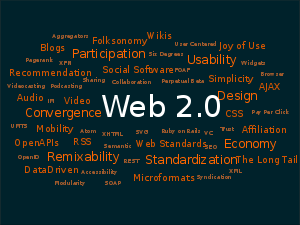Using Web 2.0 Tools for Small Business
Background
A recent EU sponsored study on MSME use of ICTs titled “E-COMMERCE STRATEGY PAPER FOR CARIFORUM VOLUME 3: SMEs’ READINESS FOR E-COMMERCE, July 15, 2010” revealed the following :
- Only 7% of business activity in the CARIFORUM region was conducted with customers in territories other than their own;
- Approximately 38% of CARIFORUM SMEs did not have a web-presence;
- 31% of SMEs communicated that the cost of setting up a business website was prohibitive in several territories.
Other reliable statistics from reputable publications reveal that:
- There has been a low business uptake of ICTs in the Region despite the increase in mobile and broadband services penetration. (Trend Analysis of World Economic Forum Network Readiness Index (NRI) 2007 to 2011)
- Businesses are generally lagging behind government in ICT sophistication. (World Economic Forum NRI Readiness Sub-index data 2007 to 2011)
- In Trinidad and Tobago the rate of increase in Government ICT usage between 2010 and 2011 is greater than that of Business ICT usage for the same period. (Global Information Technology Report as released by the World Economic Forum 2010-11 report).
At the same time however, the phenomenon of Information and Communications Technologies (ICTs) has been accelerating throughout the world as well as in the Caribbean. Increasing numbers of people are now interconnected via high-speed (or broadband) links to the internet and are able to interact with the world right from their homes, offices and communities[1].
This phenomenon has opened up a world of opportunity, especially for smaller firms, to overcome some of their traditional disadvantages and so be able to compete on a more level playing field with their larger counterparts. Smaller firms now have access to affordable yet powerful ICT equipment, due to the fierce competition and shortened innovation cycles within the Global ICT supply sector.
While some small firms have begun the process of uptake, many other firms however remain either in doubt or are altogether unaware of the benefits that technology can bring.
Introduction to the participatory World Wide Web (Web 2.0):
Businesses at a minimum must understand the jargon, tools and online applications that are used to communicate, collaborate and share electronic content. These Web 2.0 concepts, tools and usage scenarios for internal/external collaboration, communication, business administration and marketing are a simple but essential pre-requisite for making productive use of the modern internet.
Making Sense of the Web:
SMEs need to know how to efficiently use the web for conducting research and tracking information to gather business intelligence. Specifically businesses should ensure that their workers are able to:
- Use advanced search techniques for efficiently searching for information online;
- Conduct advanced multilingual online searches;
- Efficiently gather and keep track of selected information and have it served up via, watches, alerts and syndication;
- Organise information streams via Feed Readers such as Google Reader.
Remote Communication/Collaboration Applications & Tools:
A key benefit of the internet, particularly for SMEs, is in the application and usage of technologies which begin to level the playing field and cause smaller firms to seem larger, online. Through ICTs SMEs can use the web to expand the borders of their business and virtually collaborate with external resources or other firms to either execute on present business projects or to capture new opportunities.
Businesses can collaboratively develop content remotely, through online documents, spreadsheets, forms, surveys, etc. They can effectively use online storage to share common content thereby increasing business productivity as well as significantly reducing telecommunications costs by using one of a range of Voice over IP (VOIP) applications freely available on the web.
Online Publishing:
Blogging is increasingly finding a home in business promotion and marketing; not only does the software remove the technical and cost barriers to implementing a website-like functionality for publishing content online – but the ‘journal’ format encourages business owners, promotion and marketing staff to continuously engage their audience over time. Blogs also of course facilitate critical feedback, by letting readers add comments- invaluable information when developing brands, products and marketing strategies.Once basic design principles are followed and users are aware of the application of blogs for marketing and customer feedback purposes, SMEs can be off and running.
Social Networking for Business (Facebook, Twitter, YouTube, etc):
Social networking sites such as Facebook and Twitter are being increasingly used as alternatives to the traditional websites for business marketing and networking. The trick for businesses is to attain the guidance, knowledge and skill necessary to employ these tools for the benefit of a small business. Additionally, through the use of video through sites like YouTube, SMEs can develop a library of content that can be leveraged their business purposes.
Conclusion
It is clear therefore that the Web holds a number of very specific opportunities for SMEs to advance their agenda, by leveraging sometimes free but powerful on-line tools for their business benefit, with a little guidance, and understanding of basic jargon and principles, the enhancement of the ICT savvy of Regional business can greatly improve their financial performance, by both reducing their operating costs as well as increasing productivity, visibility and ultimately revenue. SMEs who employ these tools and strategies may well also place themselves in a better position to attract high-value young talent in a market which is becoming increasingly technology driven.
[1] Adapted from article CONTACT Magazine Article, “Why Small Firms Need ICT” by Atiba Phillips

